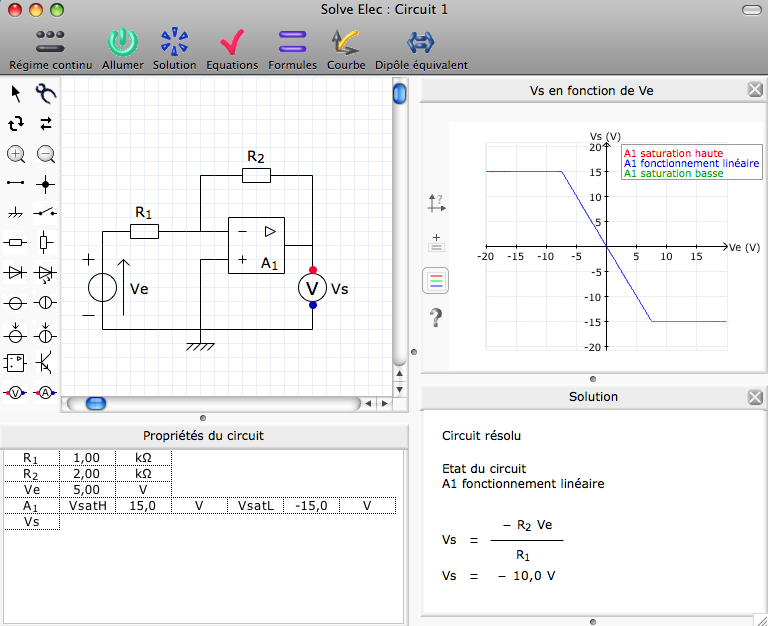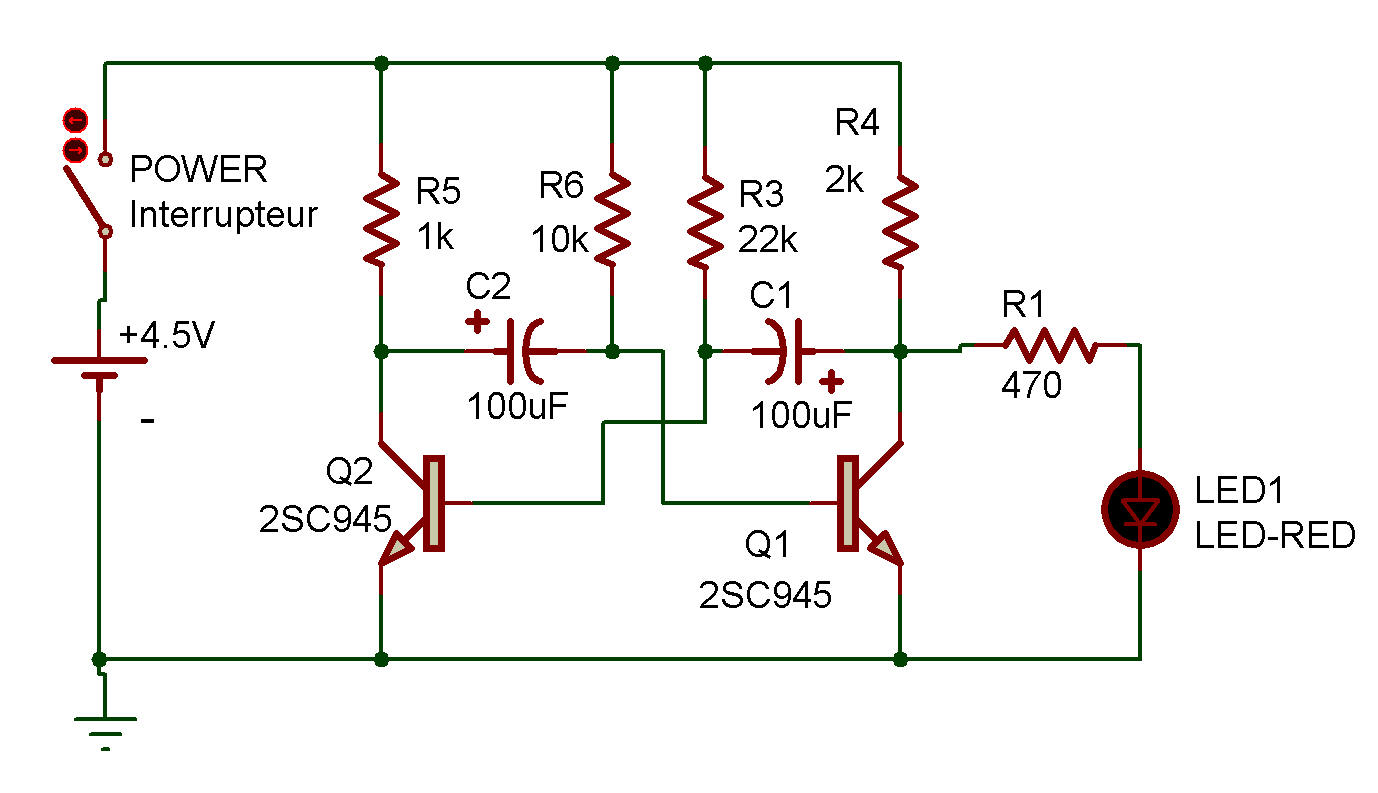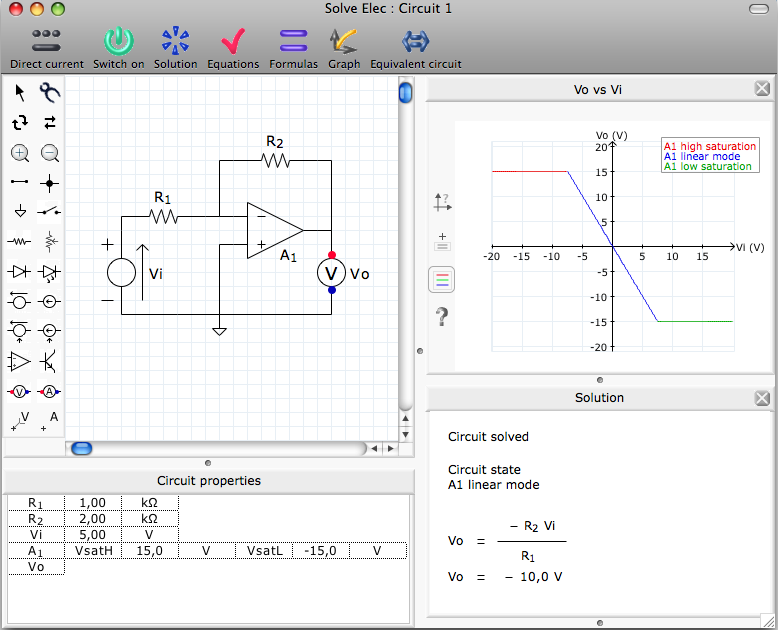
This type of Crystal Oscillators are designed around a common collector (emitter-follower) amplifier. The design of a Crystal Oscillator is very similar to the design of the Colpitts Oscillator we looked at in the previous tutorial, except that the LC tank circuit that provides the feedback oscillations has been replaced by a quartz crystal as shown below. This is because although operational amplifiers can be used in many different low frequency (≤100kHz) oscillator circuits, operational amplifiers just do not have the bandwidth to operate successfully at the higher frequencies suited to crystals above 1MHz. Colpitts Quartz Crystal OscillatorĬrystal oscillator circuits are generally constructed using bipolar transistors or FETs.
Solve elec osclillateur series#
Generally, crystal oscillators that operate at overtone frequencies do so using their series resonant frequency. However, it is also possible to “tune” a crystal oscillator to any even harmonic of the fundamental frequency, (2nd, 4th, 8th etc.) and these are known generally as Harmonic Oscillators while Overtone Oscillators vibrate at odd multiples of the fundamental frequency, 3rd, 5th, 11th etc). In a Quartz Crystal Oscillator circuit the oscillator will oscillate at the crystals fundamental parallel resonant frequency as the crystal always wants to oscillate when a voltage source is applied to it. We have seen in the previous tutorials, that an amplifier circuit will oscillate if it has a loop gain greater or equal to one and the feedback is positive.
Solve elec osclillateur plus#
We have seen in the graphs above that a crystals equivalent circuit has three reactive components, two capacitors plus an inductor so there are two resonant frequencies, the lowest is a series resonant frequency and the highest is the parallel resonant frequency. Generally though the fundamental oscillating frequency for a quartz crystal is much more stronger or pronounced than that of and secondary harmonics around it so this would be the one used. The cut of the crystal also determines how it will behave as some crystals will vibrate at more than one frequency, producing additional oscillations called overtones.Īlso, if the crystal is not of a parallel or uniform thickness it may have two or more resonant frequencies both with a fundamental frequency producing what are called and harmonics, such as second or third harmonics. Typical crystal oscillators can range in oscillation frequencies from about 40kHz to well over 100MHz depending upon their circuit configuration and the amplifying device used.

As a result, quartz crystals make an excellent component choice for use in oscillators especially very high frequency oscillators. This is due mainly to its low series resistance, Rs.

So we have seen that a quartz crystal has a resonant frequency similar to that of a electrically tuned LC tank circuit but with a much higher Q factor. This high Q-factor value also contributes to a greater frequency stability of the crystal at its operating frequency making it ideal to construct crystal oscillator circuits.

The Q-factor of most crystals is in the area of 20,000 to 200,000 as compared to a good LC tuned tank circuit we looked at earlier which will be much less than 1,000. Then the Q-factor of our crystal example, about 25,000, is because of this high X L/R ratio. There are many different types of crystal substances that can be used as oscillators with the most important of these for electronic circuits being the quartz minerals, due in part to their greater mechanical strength. This piezo-electric effect produces mechanical vibrations or oscillations which can be used to replace the standard LC tank circuit in the previous oscillators.

Then, piezo-electric devices can be classed as Transducers as they convert energy of one kind into energy of another (electrical to mechanical or mechanical to electrical). This Piezo-electric Effect is the property of a crystal by which an electrical charge produces a mechanical force by changing the shape of the crystal and vice versa, a mechanical force applied to the crystal produces an electrical charge. When a voltage source is applied to a small thin piece of quartz crystal, it begins to change shape producing a characteristic known as the Piezo-electric effect. To obtain a very high level of oscillator stability a Quartz Crystal is generally used as the frequency determining device to produce another types of oscillator circuit known generally as a Quartz Crystal Oscillator, (XO).


 0 kommentar(er)
0 kommentar(er)
